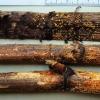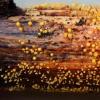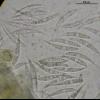
30-12-2025 16:44
Pascal DucosBonjour,Une anamorphe rose stipitée, très nombre

30-12-2025 17:14
 Bernard CLESSE
Bernard CLESSE
Bonjour à toutes et tous,Pourriez-vous aider Albe

29-12-2025 10:15
Hulda Caroline HolteHello, I found and collected this propoloid ascom

30-12-2025 09:04
Hello.A Pyrenomycete sprouting sparsely but very d

29-12-2025 17:44
Isabelle CharissouBonjour,J'aimerais savoir si d'autres personnes au

12-11-2021 00:03
Lepista ZacariasHi everybody,A week ago in my fiels trip I noticed

29-12-2025 17:12
 Bernard CLESSE
Bernard CLESSE
Bonjour à toutes et tous,Pourriez-vous m'aider à
Hymenoscyphus sachalinensis in southern Germany
Hans-Otto Baral,
21-08-2017 21:19
 Hi all
Hi allyesterday I finally found in my home village in Tübingen Hymenoscyphus sachalinensis alias H. aff. dearnessii in masses, it is my first personal collection. I did not expect that because over all the years I never saw it, although looking now and then on its substrate, dead stems of Reynoutria sachalinensis (or R. x bohemica, rarely R. japonica).
Here I add the most actual map of the (still not validly described) species, where you can see that large areas are without a record, to my knowledge. In case you have collected it in such an "empty" area, please do not hesitate and contact me.
The species is very frequent in the middle of Germany, and now I assume that it can perhaps be found all over central Europe. Certainly it is invasive, the question is only at what time it arrived at which place. The first known collections were made as late as 2001.
I also add some images of my collection. The species differs from H. scutula in the abundant growth of the bright yellow apothecia, distinctly longer spores (30-36) which are not really scutuloid because the asymmetry at the spore apex is lacking and therefore the upper setula inserted apically.
Zotto






